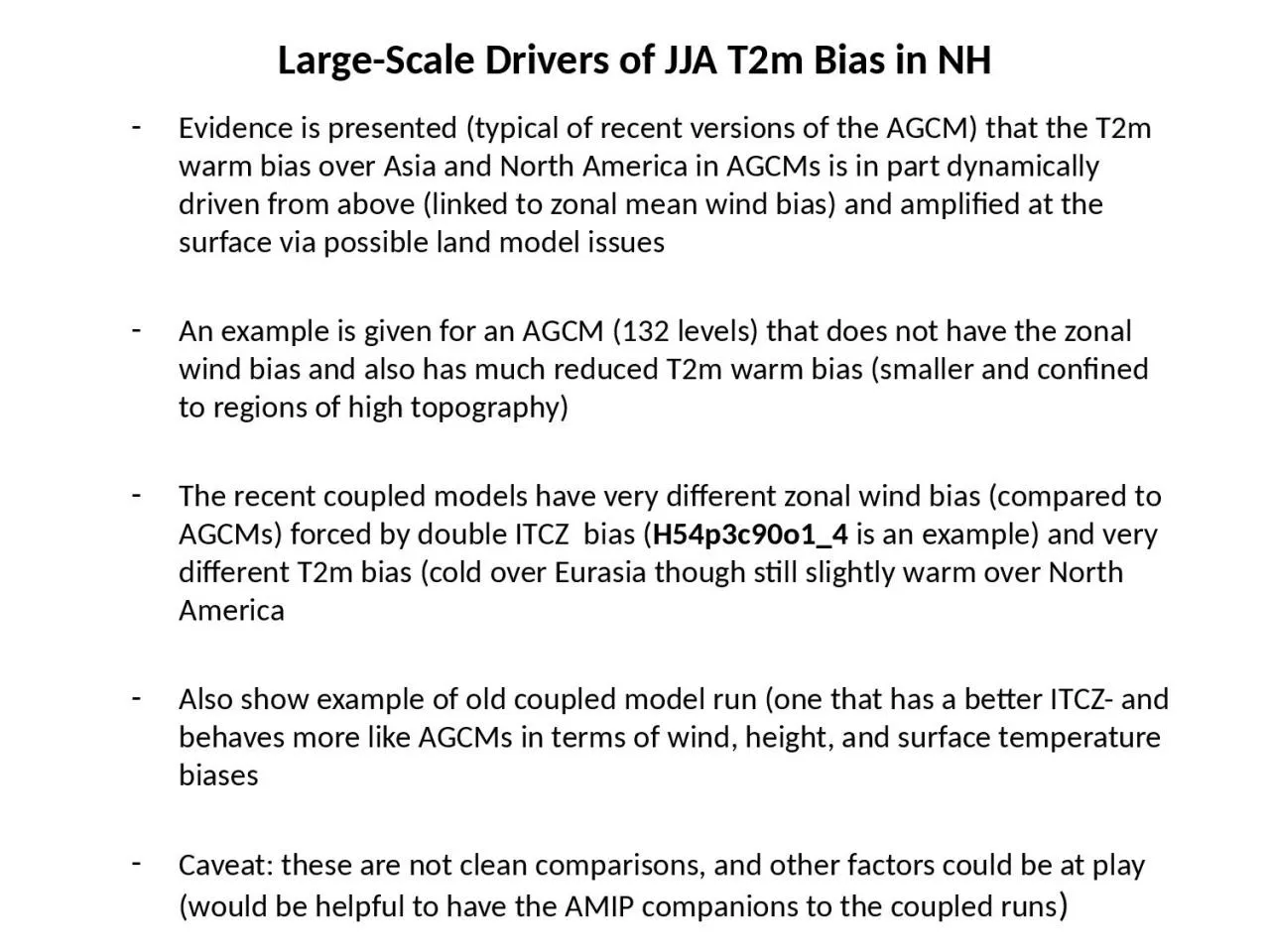

E vidence is presented typical of recent versions of the AGCM that the T2m warm bias over Asia and North Americ a in AGCMs is in part dynamically driven from above linked to zonal mean wind bias and amplified at the surface via possible land model issues ID: 1040257
Download Presentation The PPT/PDF document "Large-Scale Drivers of JJA T2m Bias in N..." is the property of its rightful owner. Permission is granted to download and print the materials on this web site for personal, non-commercial use only, and to display it on your personal computer provided you do not modify the materials and that you retain all copyright notices contained in the materials. By downloading content from our website, you accept the terms of this agreement.
1. Large-Scale Drivers of JJA T2m Bias in NHEvidence is presented (typical of recent versions of the AGCM) that the T2m warm bias over Asia and North America in AGCMs is in part dynamically driven from above (linked to zonal mean wind bias) and amplified at the surface via possible land model issuesAn example is given for an AGCM (132 levels) that does not have the zonal wind bias and also has much reduced T2m warm bias (smaller and confined to regions of high topography)The recent coupled models have very different zonal wind bias (compared to AGCMs) forced by double ITCZ bias (H54p3c90o1_4 is an example) and very different T2m bias (cold over Eurasia though still slightly warm over North AmericaAlso show example of old coupled model run (one that has a better ITCZ- and behaves more like AGCMs in terms of wind, height, and surface temperature biasesCaveat: these are not clean comparisons, and other factors could be at play (would be helpful to have the AMIP companions to the coupled runs)
2. AMIP runsIC180_AMIP_asd1: typical (for AGCM) zonal mean wind biasWMP_F120_AMIP_0: another example of typical AGCM biases3) a0362 ( 132 levels): unusual in that it has essentially no zonal mean wind bias in middle latitude NH
3. IC180_AMIP_asd1: typical (for AGCM) zonal mean wind bias – northward shift of the jetAssociated positive height bias, similar to that associated with decadal drought in NHT2mT850T700200z
4. WMP_F120_AMIP_0 : typical (for AGCM) zonal mean wind bias – northward shift of the jetAssociated positive height bias, similar to that associated with decadal drought in NHT2mT850T700200z
5. Slight negative height bias – though little in middle latitude troposphereT2mT850T700200za0362: 132 levels, unusual compared to other AGCM versions in having unbiased zonal mean wind in NH extratropicsMuch reduced T2m bias largely confined to high topography
6. Coupled runH54p3c90o1_4: exhibits typical coupled model zonal mean wind bias (enhanced subtropical westerlies), and considerably different (from AGCM) T2m bias
7. Associated negative height bias near 30N T2m500z200zZonal wind bias likely driven by double ITCZ bias: enhanced subtropical westerliesT2m biases more cold than warm
8. Additional Coupled Model ExampleTest208 is interesting because it has a rather good ITCZ (compared with recent versions that have very strong double ITCZ bias), and so has biases much more like the AGCMs
9. Reduced double ITCZ bias
10. Test208 : coupled but has typical (for AGCM) zonal mean wind bias – northward shift of the jetAssociated positive height bias, similar to that associated with decadal drought in NHSkin TT850T700200z